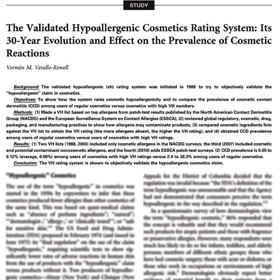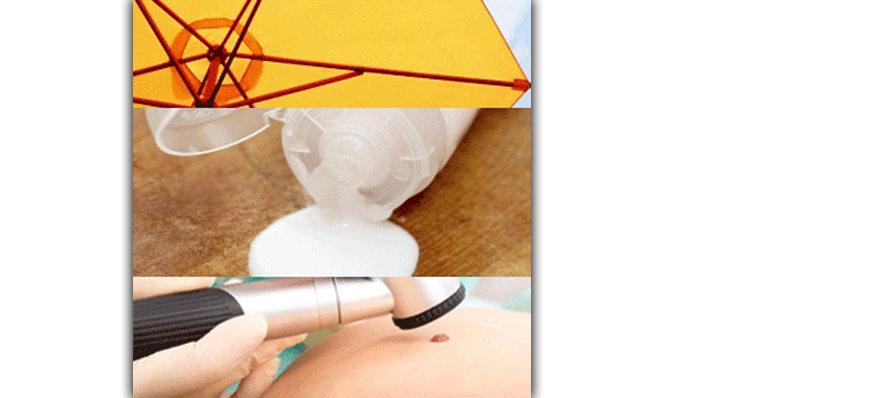Verallo-Rowell VM. The Validated Hypoallergenic Cosmetics Rating System: its 30-Year Evolution and Effect on the Prevalence of Cosmetic Reactions. Dermatitis. 22 (2) Mar/Apr 2011 PUBLICATION
ABSTRACT
Background: The validated hypoallergenic (vh) rating system was initiated in 1988 to try to objectively validate the “hypoallergenic” claim in cosmetics.
Objectives: To show how the system rates cosmetic hypoallergenicity and to compare the prevalence of cosmetic contact dermatitis (CCD) among users of regular cosmetics versus cosmetics with high VH numbers.
Methods: (1) Made a VH list based on top allergens from patch-test results published by the North American Contact Dermatitis Group (NACDG) and the European Surveillance System on Contact Allergies (ESSCA); (2) reviewed global regulatory, cosmetic, drug, packaging, and manufacturing practices to show how allergens may contaminate products; (3) compared cosmetic ingredients lists against the VH list to obtain the VH rating (the more allergens absent, the higher the VH rating); and (4) obtained CCD prevalence among users of regular cosmetics versus users of cosmetics with high VH ratings.
Results: (1) Two VH lists (1988, 2003) included only cosmetic allergens in the NACDG surveys, the third (2007) included cosmetic and potential contaminant noncosmetic allergens, and the fourth (2010) adds ESSCA patch-test surveys. (2) CCD prevalence is 0.05 to 0.12% (average, 0.08%) among users of cosmetics with high VH ratings versus 2.4 to 36.3% among users of regular cosmetics.
Conclusion: The VH rating system is shown to objectively validate the hypoallergenic cosmetics claim.





